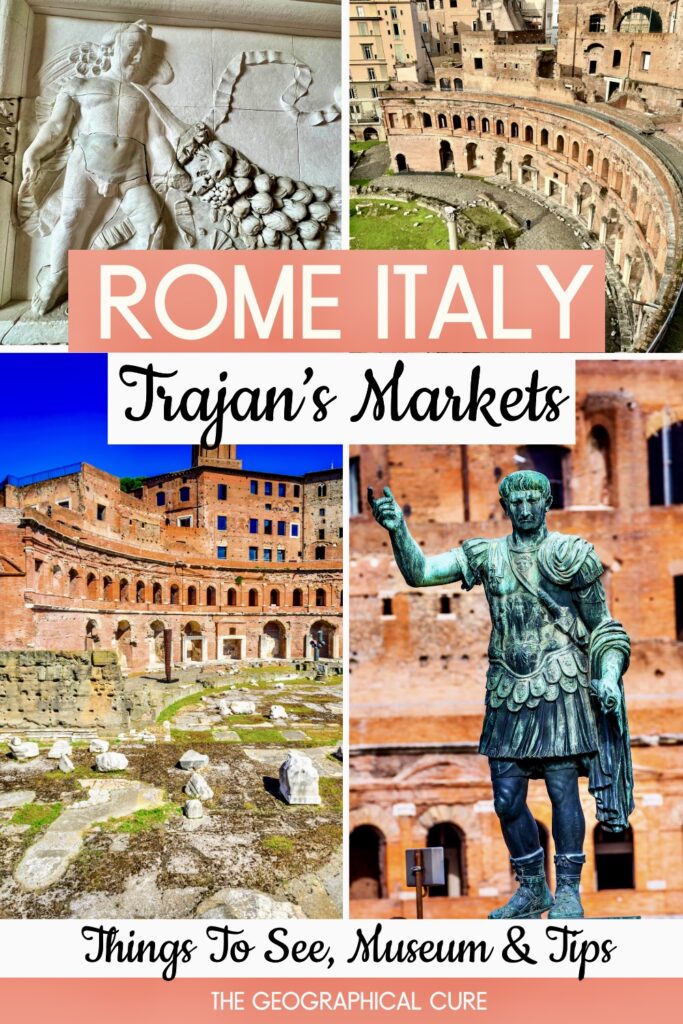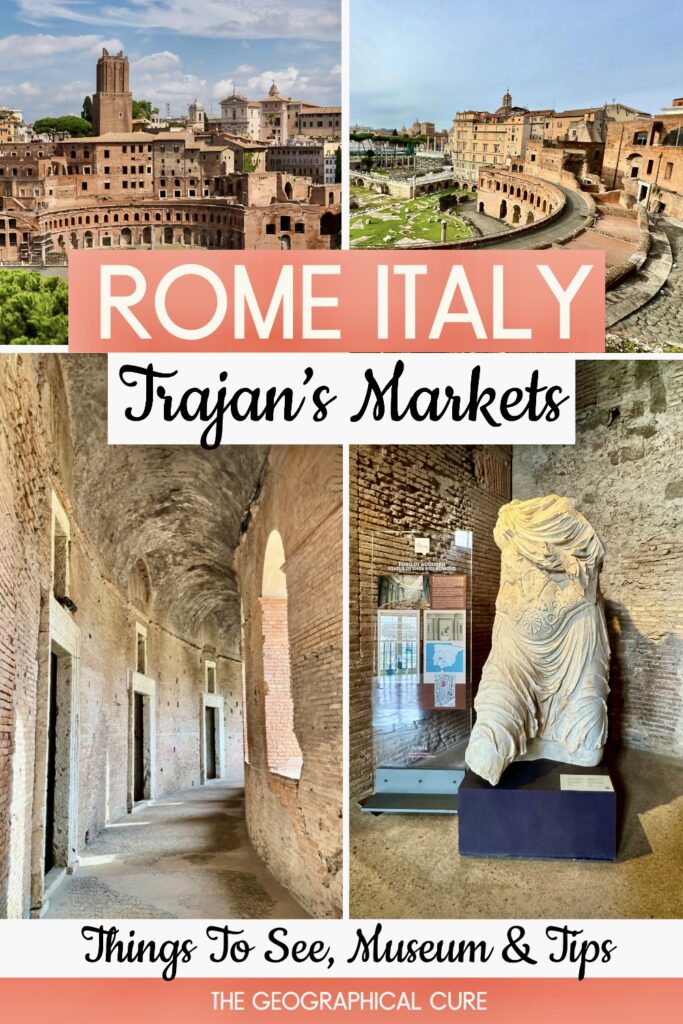Trajan’s Markets in Rome is a remarkably well preserved archaeological gem. Dating from 110 AD, it’s considered the world’s first shopping mall.
Emperor Trajan built the markets after a victory over ancient Dacia. They were designed by his favorite architect, Apollodorus of Damascus.
It was an extravagant public space and commercial complex. The bustling markets were a multi-functional building, with shops, administrative offices, and warehouses.
On a visit, you’ll have an evocative glimpse of what everyday life was like in 2nd century Rome. You can walk in the footsteps of ancient shoppers and merchants.
>>> Click here to book a tour of Trajan’s Markets
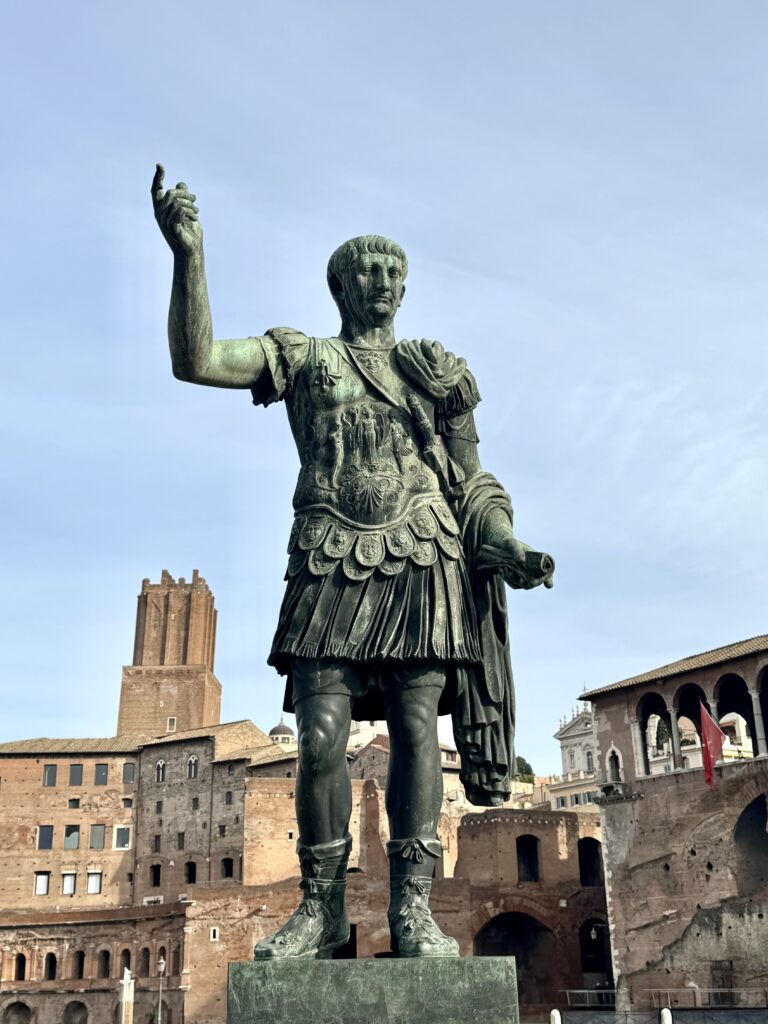
Who Was Trajan?
Trajan was one of the most powerful, popular, and charismatic emperors of Rome. He ruled from 98 AD and 117 AD and was nicknamed optimus princeps, which means best first citizen.
Trajan was the first in a long line of adoptive rulers, adopted by his predecessor Nerva. These emperors were chosen for the job based on merit, not bloodlines.
Trajan was both a tremendous general and a master builder, both of which endeared him to the people.
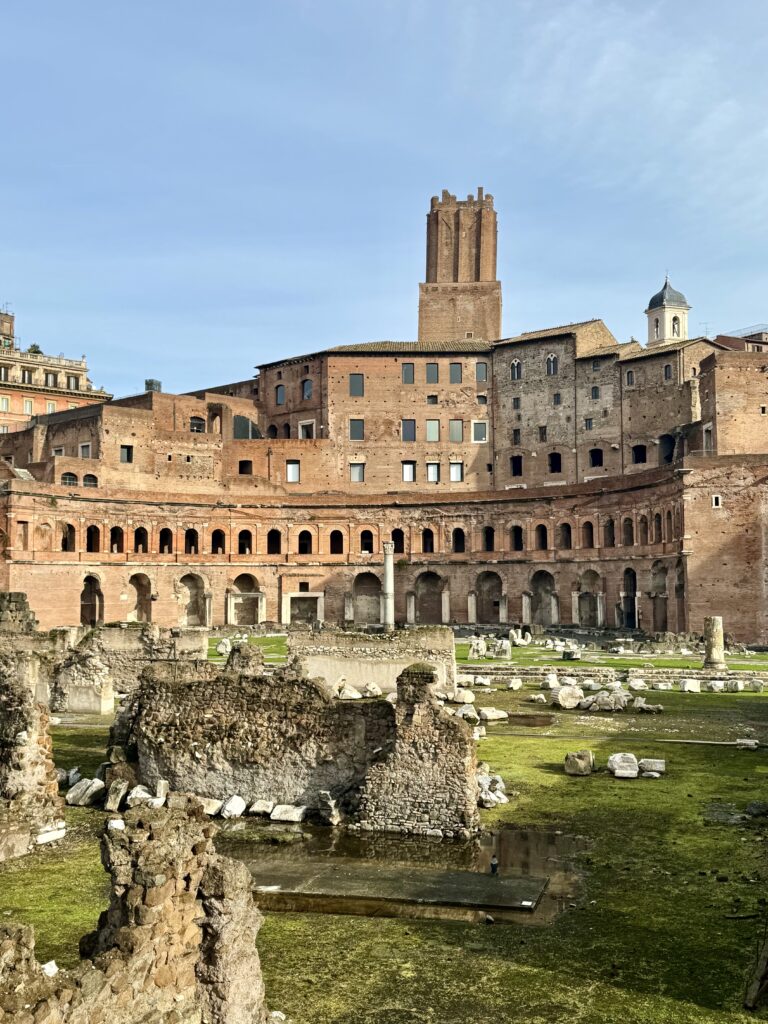
Trajan aimed to surpass Julius Caesar’s conquests. And he succeeded, with the Roman Empire reaching its greatest extent under Trajan’s rule.
In terms of building, Trajan undertook extensive public works and architectural projects that helped the citizenry and significantly transformed the Roman Empire.
He built temples, bathhouses, Rome’s largest forum, and the markets.
Trajan also ordered construction of roads, bridges, aqueducts, and harbors. All this improved connectivity and infrastructure across the Roman Empire. These projects facilitated trade, military movements, and the citizens’ welfare.
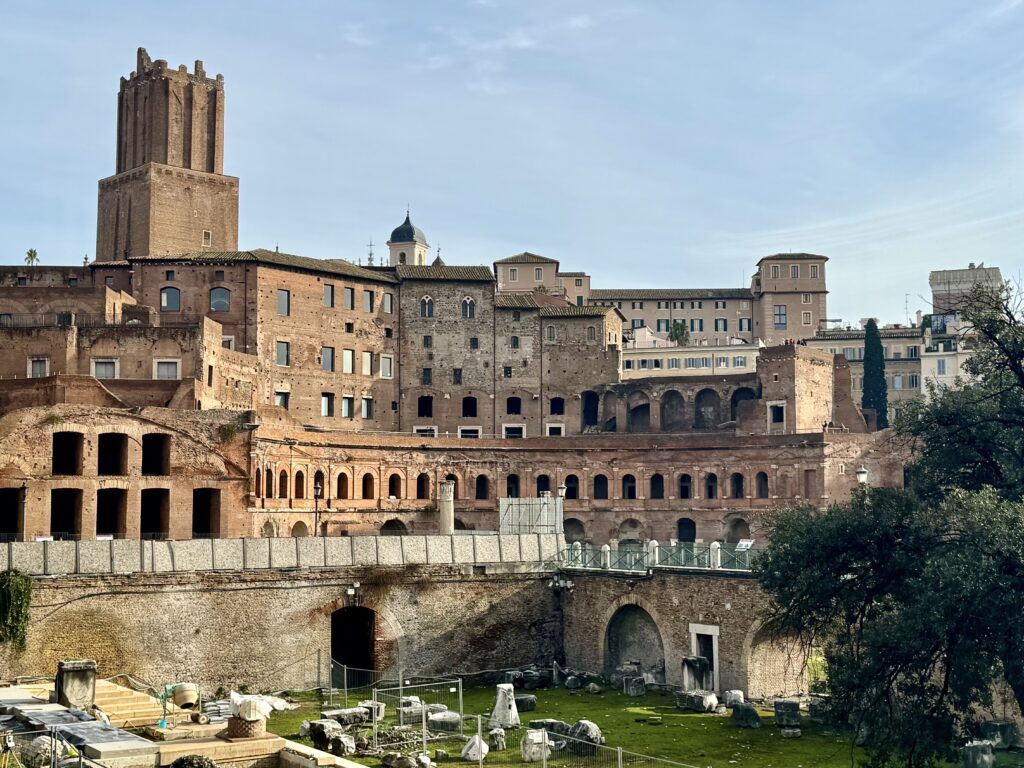
Trajan’s Market: What to See
Facade
The markets are a dense multi-story building with a concave facade. It’s a complex urban space, a spectacular display of Roman engineering.
Unlike most other Roman buildings, the brick facade wasn’t covered with marble or stucco. The architect liked the the contrast between the warm brick and the white stone lining the arches and windows.
The building was later repurposed into a castle, a barrack, and a convent. The central tower you see was part of a medieval fortress called Castello delle Milizie.
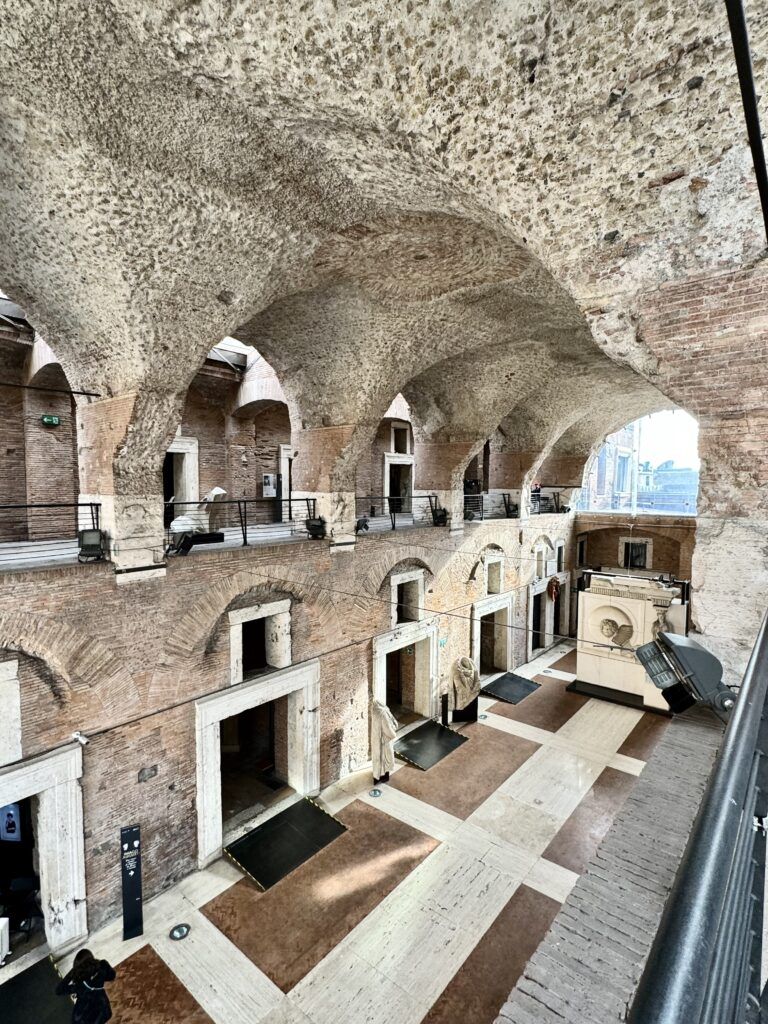
Great Hall
The Great Hall is the current entrance to the markets.
It’s a vast central space, covered with barreled groin vaults. resting on large travertine shelves, the vaults allowed air to circulate and provided light for the two levels of shops.
The rooms were likely used for administrative offices, official ceremonies, and public functions. They perhaps also served as a covered market space.
The upper floor housed offices. They were linked to the main floor by hidden flying buttresses.
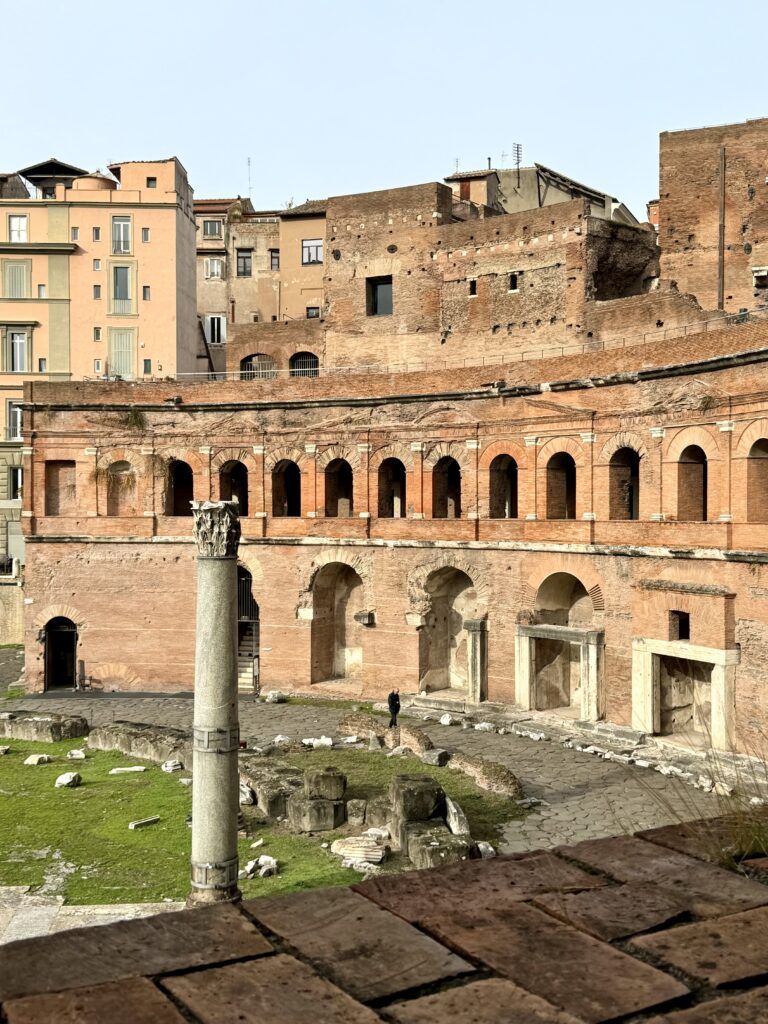
Central Body
The central body, known as the Great Hemicycle, is a striking semi-circular terraced structure spanning three stories. This architectural marvel houses over 150 shops, or tabernae, that line the Via Biberatica,
The building is a prime example of Imperial Roman architecture, constructed primarily from concrete with a brick exterior. The brick work is decorative, incorporating a unique patterns of triangular and semi-circular shapes at the top.
The shops were once decorated with frescoed walls and black and white floor mosaics. Each shop was different.
On the ground floor, the alcove-like shops likely sold dry goods, flowers, and vegetables to passersby. The upper floors, with their gallery spaces, were for speciality shops that sold oil, wine, and exotic Eastern spices.
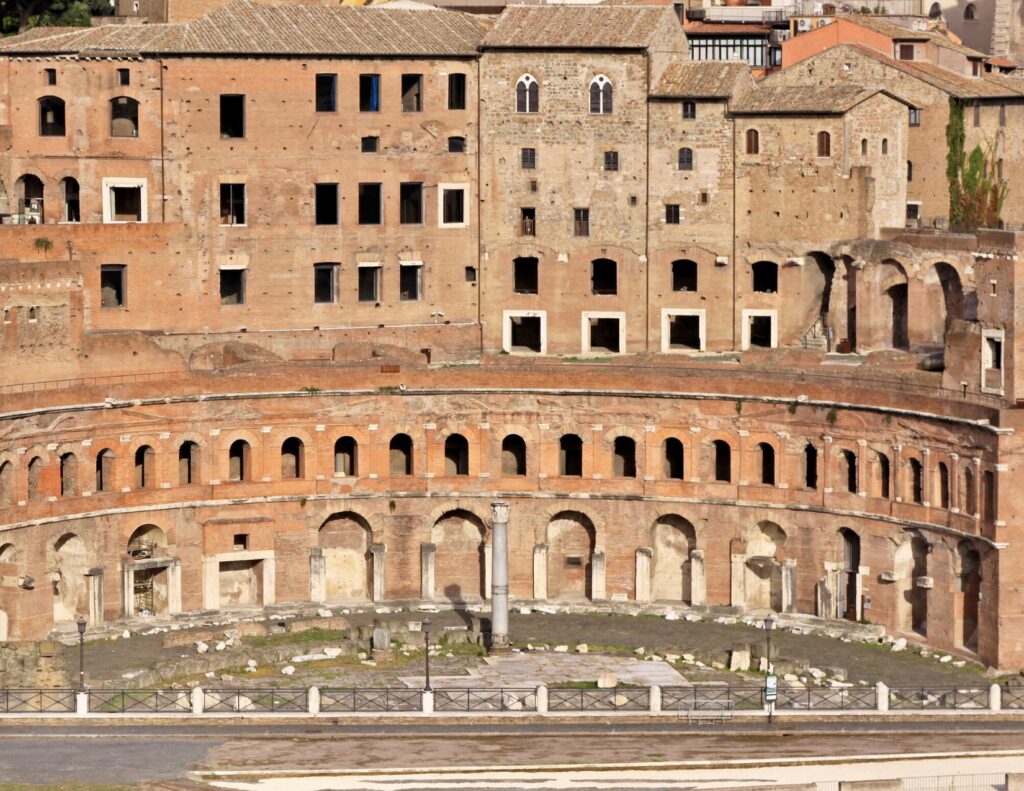
Some of the ground level spaces may also have been used for services such as barbers, cobblers, or small workshops where craftspeople worked and sold their wares directly to consumers.
The shops were typically a single room with a wide entrance, sometimes secured with shutters or a curtain.
They shops might have extended further back or have storage space behind or above the selling area. There are no signs of ancient doors.
One alcove was restored to illustrate the original look. It has the typical window above the lintel.
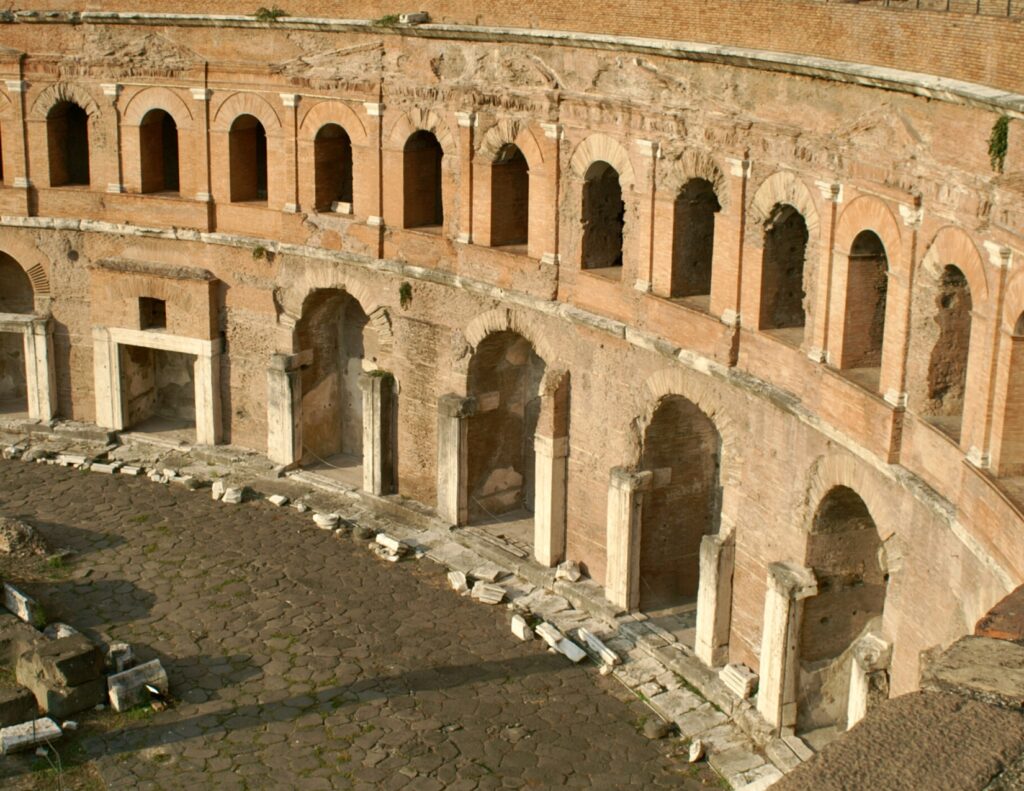
The second floor of the market has 26 arched windows, which once lit up a covered walking lined with shops.
Above the hemicycle, the upper floors of the complex were Trajan’s administrative offices. There, bureaucrats doled out free grain to unemployed citizens, with an eye toward pacifying them and staving off riots.
The third floor is less well preserved. But in a small room, you will find remnants of grotesque frescos, probably by the Zuccari brothers.
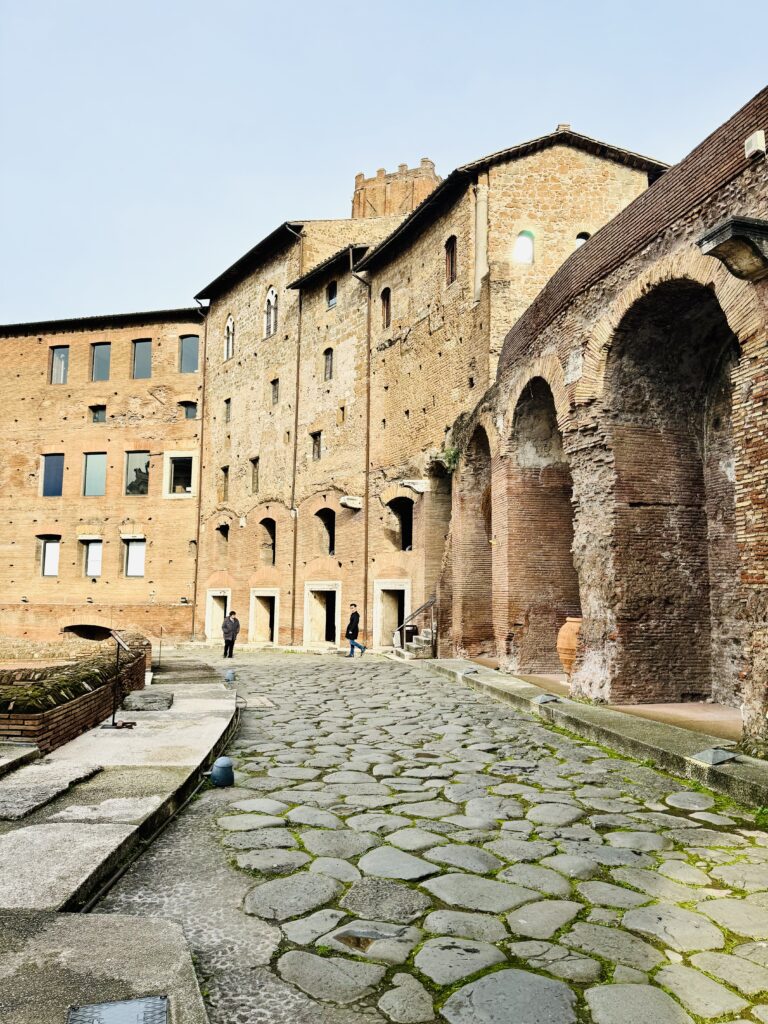
Via Biberatica
This ancient road weaves its way through the complex, bordered by reasonably well-preserved shop fronts.
Named Biberatica, from the Latin word “bibere” meaning “to drink,” it’s believed that this name reflects the street’s history of housing numerous beverage shops.
Via Biberatica serves as a connector between the complex’s upper and lower areas. It resembles a typical urban street, yet it’s impossibly ancient.
The road itself is paved with large stones. It’s lined with shops featuring wide doors framed by travertine stone doorposts, complete with sidewalks on either side.
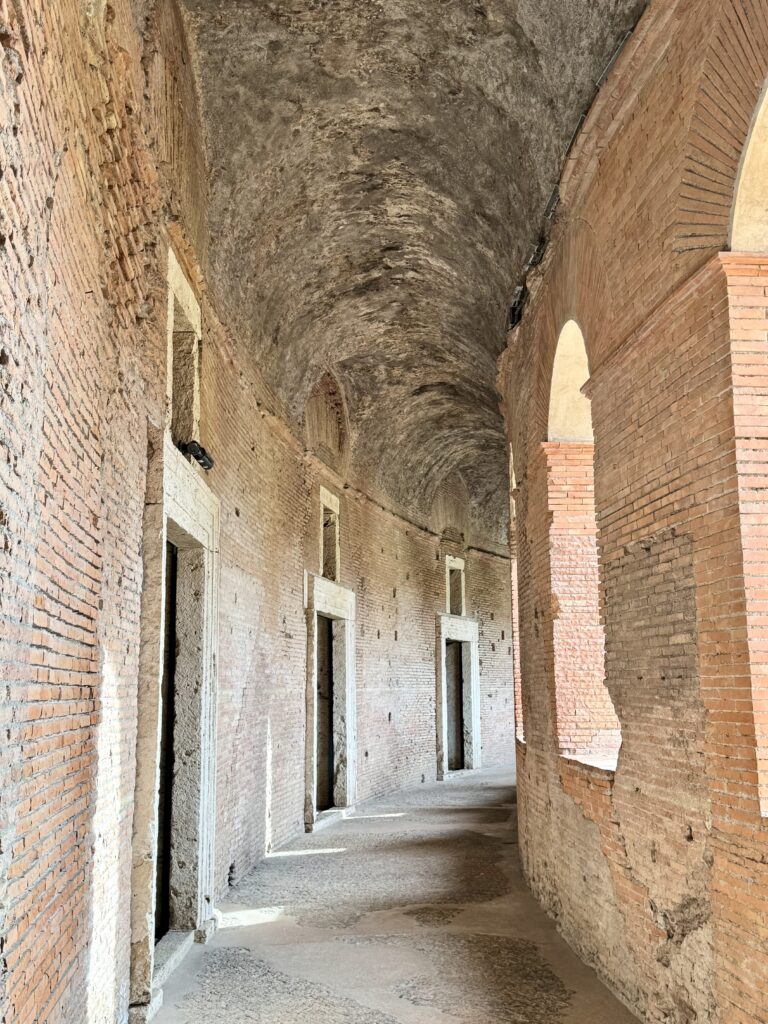
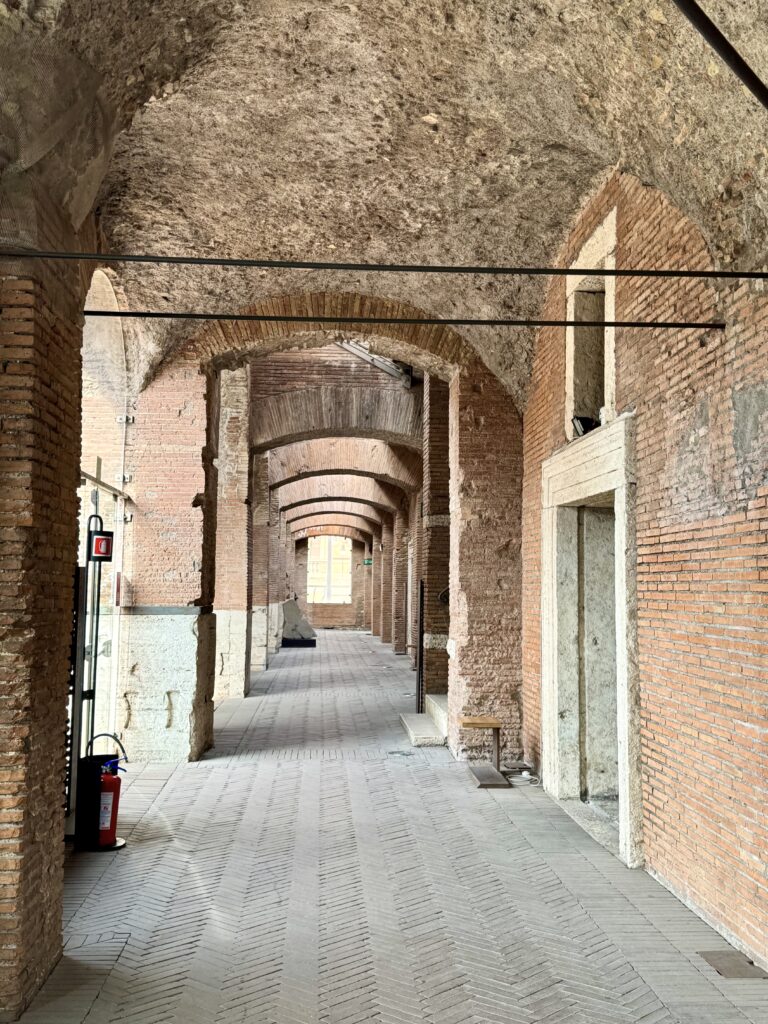
Museo dei Fori Imperiali
The markets house the Museum of the Imperial Forums in the upper levels. You can literally walk outside, atop, and amid the ruins.
Opened in 2007, it’s beautifully designed, if not beautifully organized.
Each room is dedicated to one of the imperial forums: Trajan’s Forum, Caesar’s Forum, Augustus’ Forum, Vespasian’s Forum, and the Forum of Domitian and Nerva.
Each forum was a monument to the emperor’s greatness and housed temples, basilicas, and baths.
The collection offers a detailed look into the life, politics, and architecture of ancient Rome through the lens of its imperial forums. You’ll find informational panels, reconstructions, and multimedia installations.
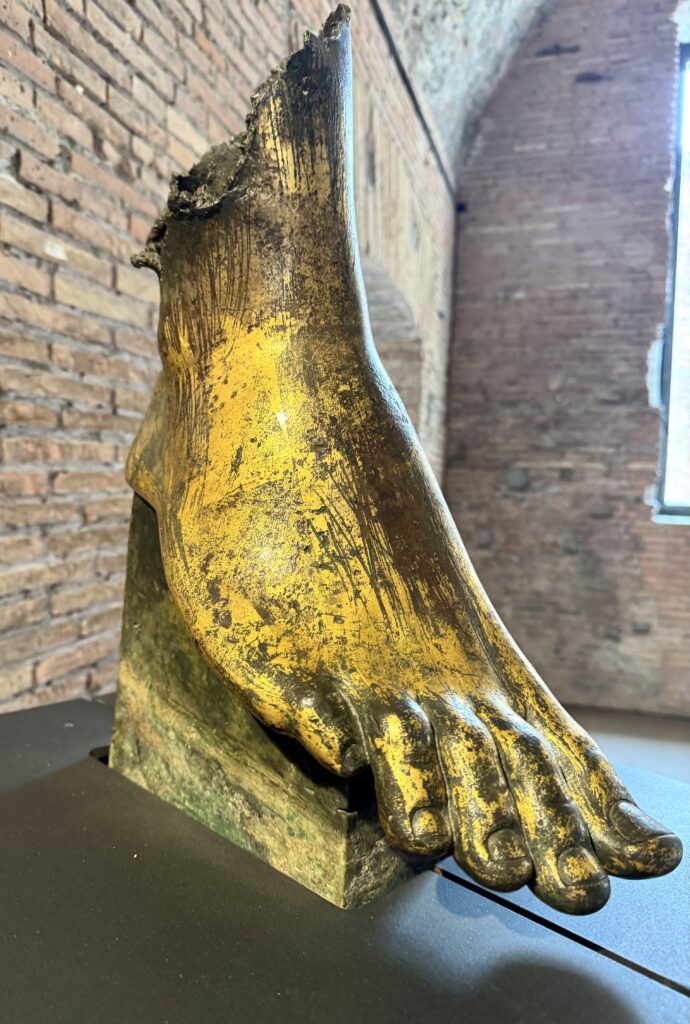
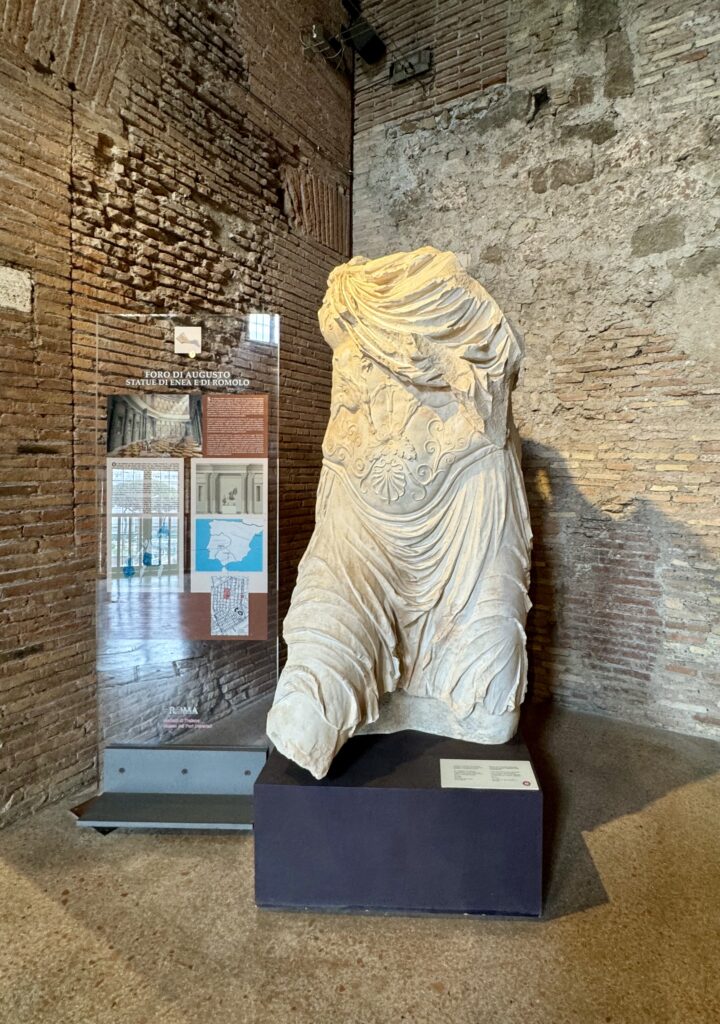
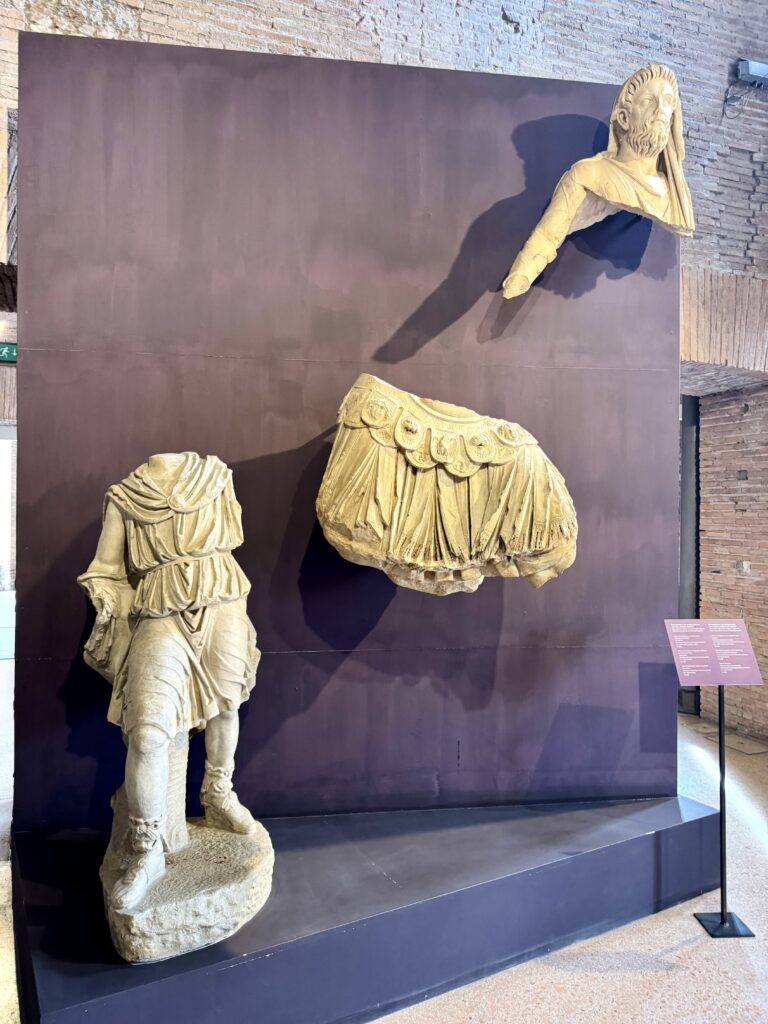
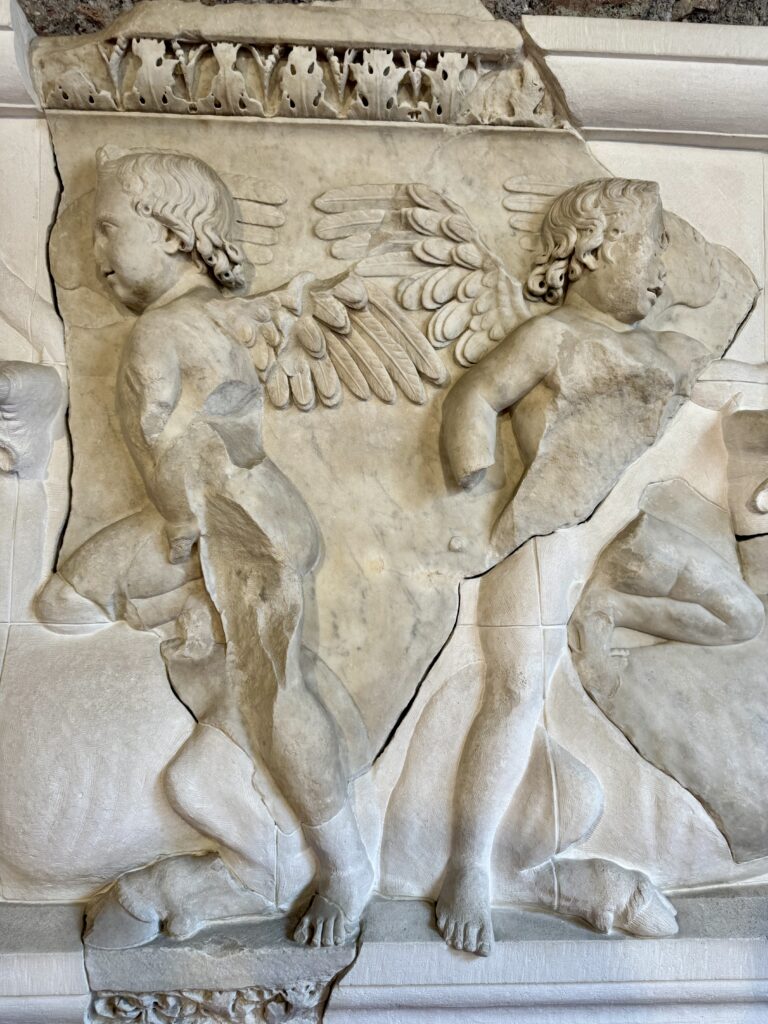
There’s also a treasure trove of artifacts and statuary from the forums. While not as impressive as Palazzo Massimo or the Vatican Museums, it’s well displayed.
A caryatid from from Augustus’ Forum marks the entrance, alongside a bearded mask of Jupiter. To the right, a bronze foot is all the remains of a Winged Victory from the forum’s temple.
The main floor has mini reconstructions of the various forums that help you imagine ancient Rome.
Upstairs, you’ll find a section of Caesar’s Forum, including many cupids carved from white marble that would eventually adorn all of Rome.
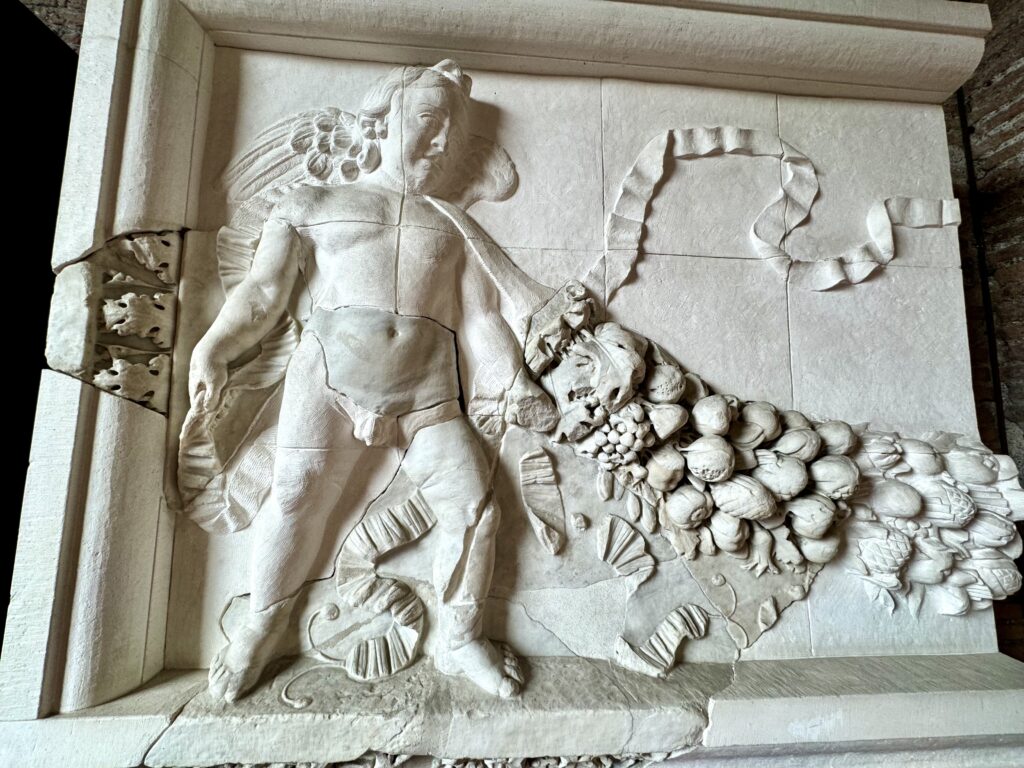
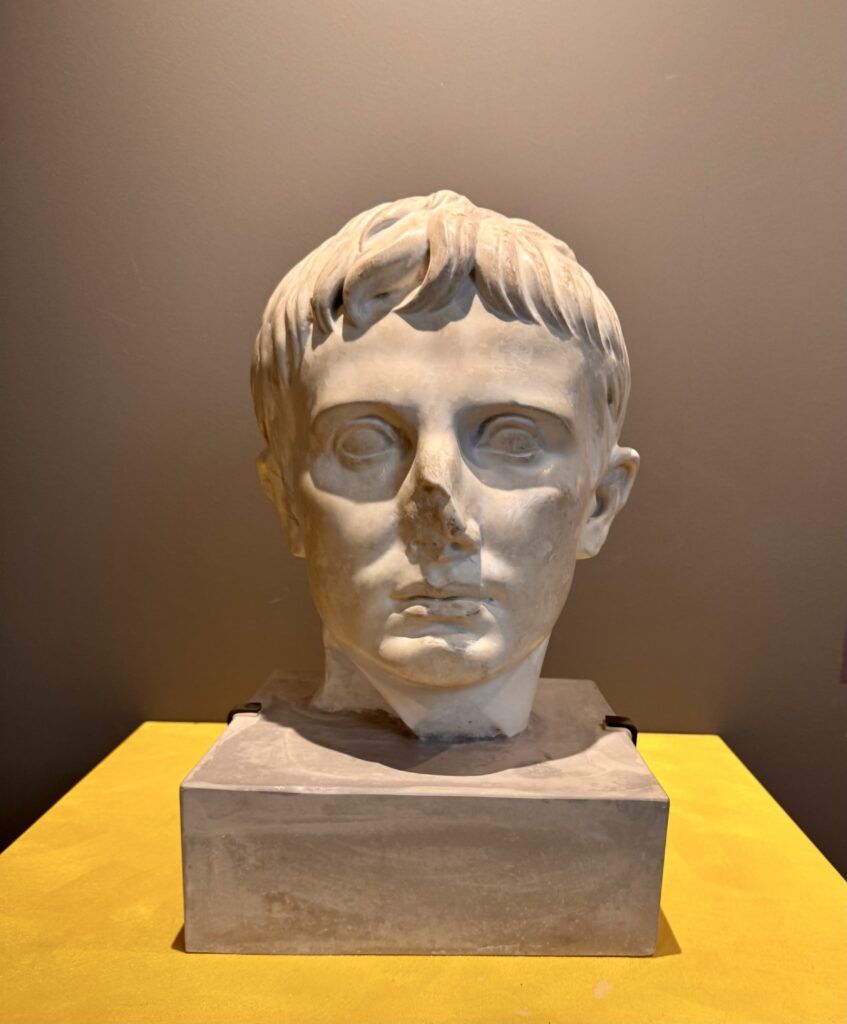
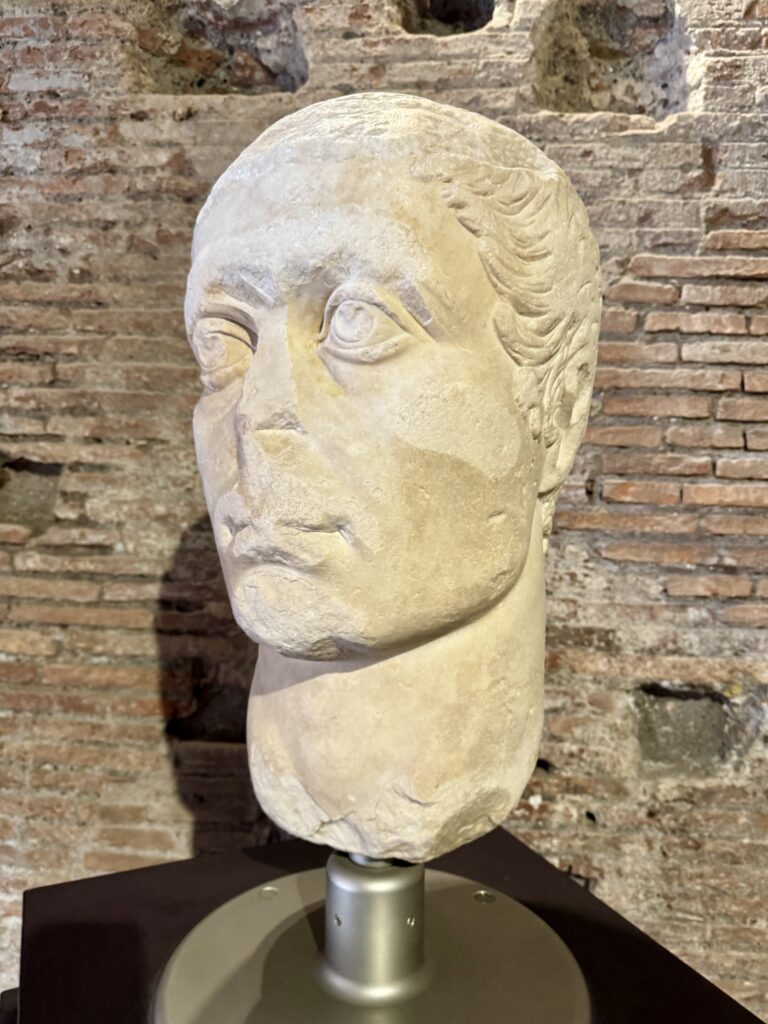
Tip: Your ticket includes entrance to special exhibitions, which are hosted on this floor. They generally have an Ancient Rome theme.
The rest of the upstairs is dedicated to the Forum of Augustus.
You’ll see a model of the Temple of Mars and large column fragments that give you a sense of its enormous scale. You’ll also find bits and pieces of a hand that was part of a 40 foot statue of Augustus.
From here, you go outside. From walkways on the curved top, you’ll have splendid views over the forums and the city.
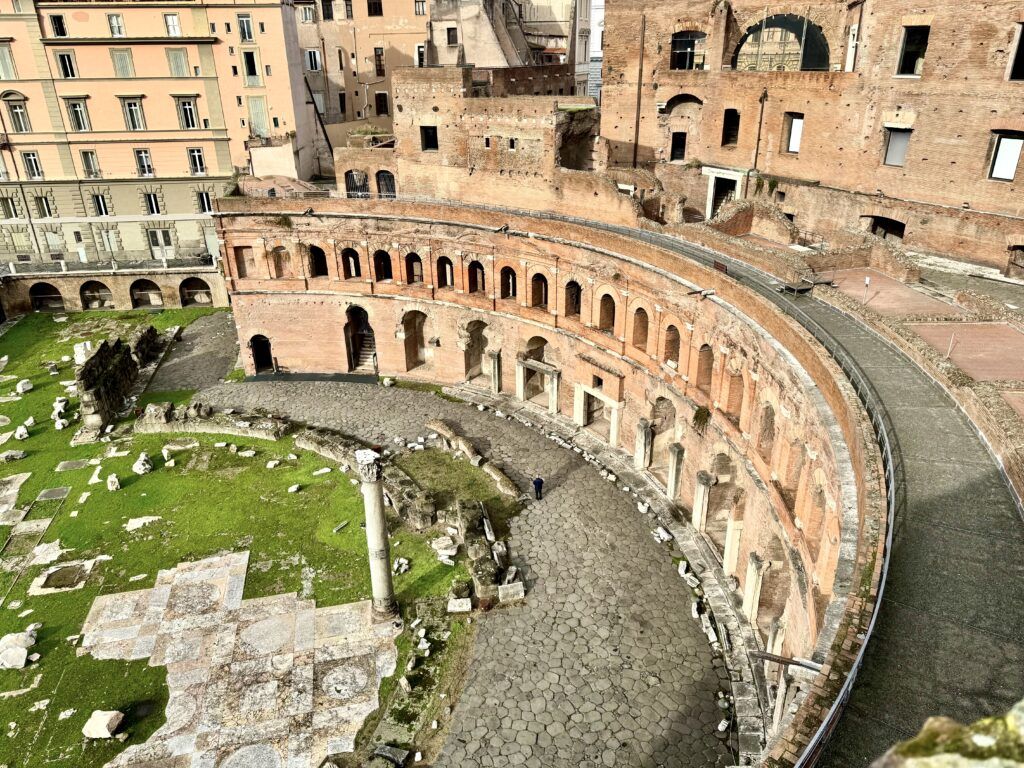
Practical Guide & Tips For Trajan’s Market
Address: Via Quattro Novembre 94
Hours: Open daily from 9:30 am until 7:30 pm.
Tickets: 13 euros. Click here to pre-book a ticket with audio experience. You can also purchase a 2-3 day Roma Pass at the ticket office.
Pro Tips:
There is a fairly large shop at the entrance with books on Ancient Rome for both adults and kids.
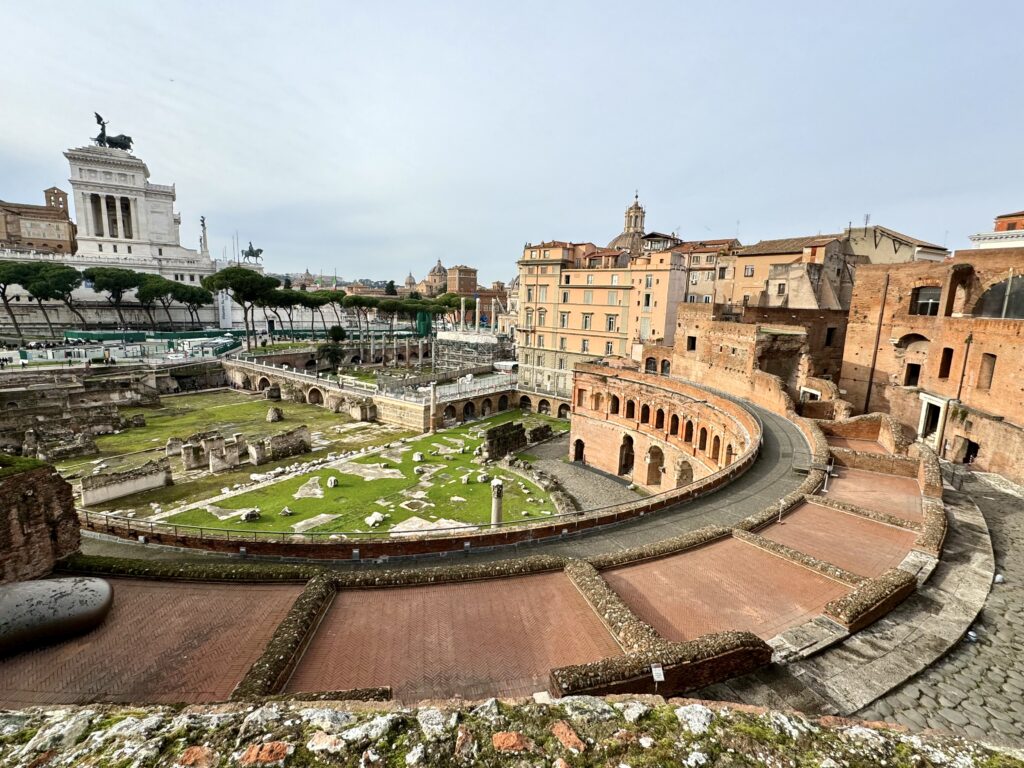
There is also a 25 minute video in the Great Hall that recreates the market as it once was. I’d watch this before you plunge in, if time permits.
There is plenty of signage in both English and Italian.
Accessibility
There are quite a few long flights of stairs. But there are also ramps into every room, a wheelchair path, and an elevator to get between the levels.
Nearby Attractions
The markets are situated on the Via dei Fori Imperiali. They are adjacent to the imperial forums, the Roman Forum, and opposite the Colosseum.
Although not technically within Trajan’s Market, Trajan’s Column is adjacent to it and is a must-see.
The well-preserved column commemorates Trajan’s victory in the Dacian Wars and is famed for its detailed spiral frieze, which depicts the story of the campaigns.
At the base of Trajan’s Column, you can also visit the Roman House at Palazzo Valentini. The 1.5 hour tour with a sound and light show features the remains of an elegant ancient Roman House.
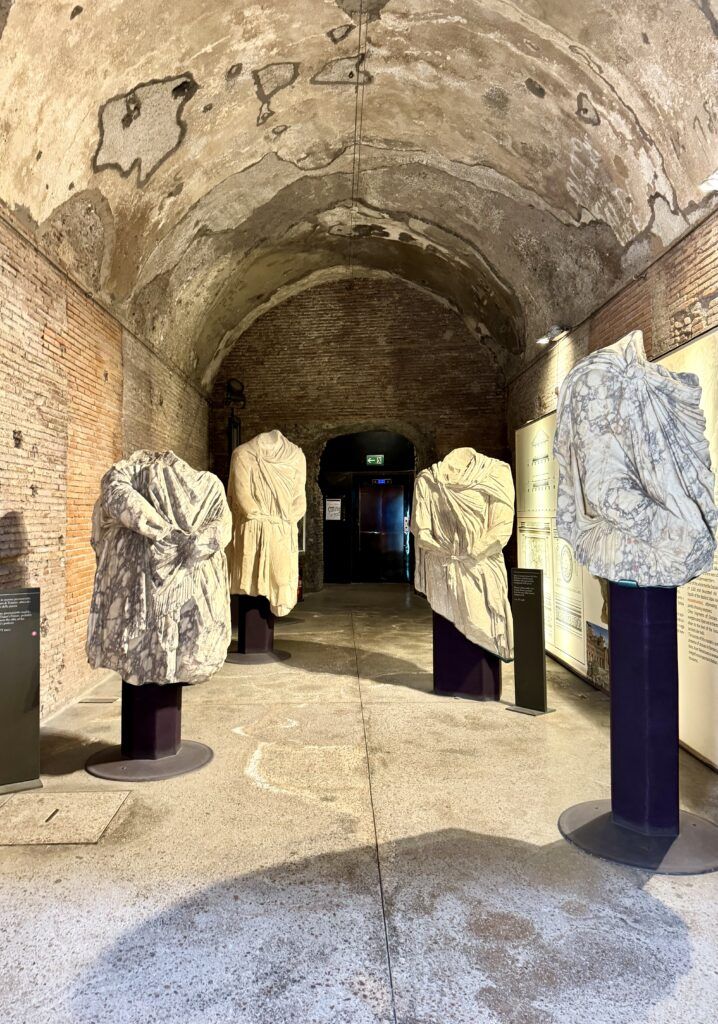
I hope you’ve enjoyed my guide to Trajan’s Market. You may find these other Rome travel guides useful:
- 8 Ways To Spend 1 day in Rome
- 2 Days in Rome Itinerary
- 3 Days in Rome Itinerary
- 4 Days in Rome Itinerary
- 5 Days in Rome Itinerary
- Hidden Gems in Rome
- Best Day Trips From Rome
- Rome’s Palace Museums
- Best Museums in Rome
- Must See Archaeological Sites
Pin it for later.

